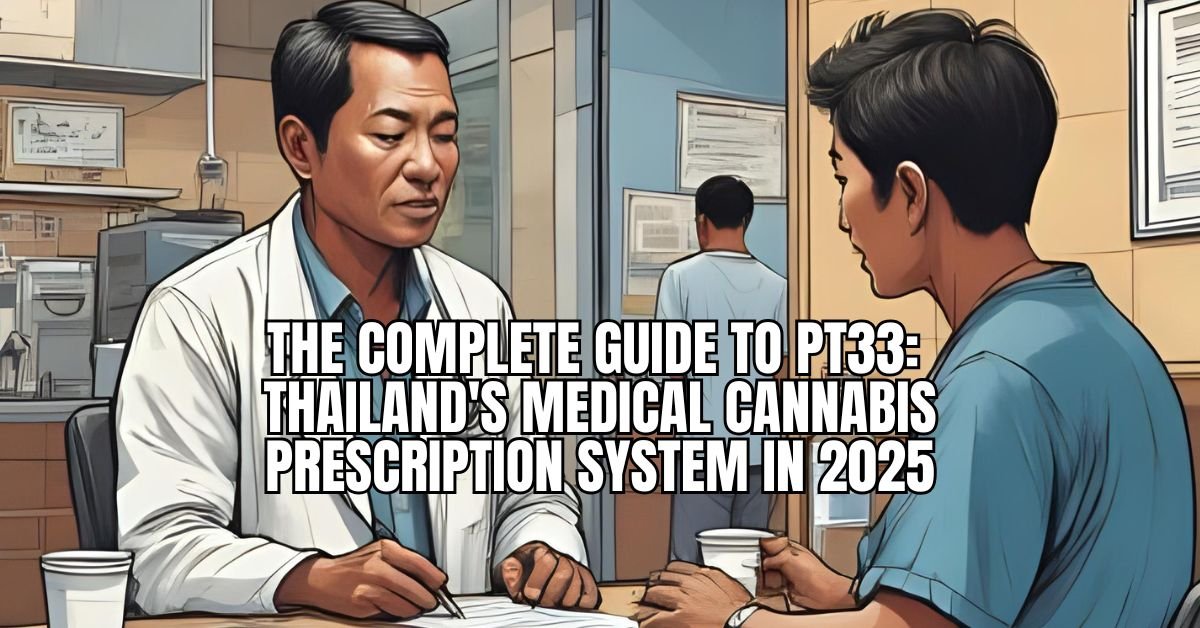Nausea and appetite loss affect millions of patients with cancer, HIV/AIDS, and other chronic conditions, significantly impacting quality of life and treatment outcomes. Cannabis for nausea relief and appetite stimulation has emerged as one of the most well-documented medical uses of marijuana, offering hope where traditional medications fall short. This comprehensive guide explores how medical cannabis can transform your approach to managing treatment-related nausea and appetite loss.
Table of Contents
- Understanding Cannabis Anti-Nausea Properties
- How Cannabis Stimulates Appetite
- Cannabis for Chemotherapy-Induced Nausea
- Medical Marijuana for HIV/AIDS Wasting
- THC vs CBD for Nausea and Appetite
- Best Cannabis Products for Nausea Relief
- Dosing Guidelines for Nausea and Appetite
- Safety Considerations and Drug Interactions
- Legal Access for Medical Patients
- Frequently Asked Questions
Understanding Cannabis Anti-Nausea Properties
Cannabis nausea relief works through complex interactions with your body’s emetic (vomiting) control systems. The endocannabinoid system plays a crucial role in regulating nausea and vomiting through CB1 receptors in the brain’s vomiting center and digestive tract.
Medical marijuana for nausea has been used for decades, with synthetic THC (dronabinol/Marinol) FDA-approved since 1985 for chemotherapy-induced nausea and vomiting (CINV). However, whole-plant cannabis often provides superior relief due to the entourage effect of multiple cannabinoids and terpenes working together.
Research shows that cannabis can be particularly effective for anticipatory nausea, delayed nausea, and breakthrough nausea that doesn’t respond to traditional antiemetic medications.
How Cannabis Stimulates Appetite
Cannabis appetite stimulation, commonly known as “the munchies,” occurs through several mechanisms:
Hypothalamic Activation: THC activates CB1 receptors in the hypothalamus, the brain region controlling hunger and satiety, increasing appetite signals.
Ghrelin Enhancement: Cannabis may increase ghrelin, the “hunger hormone,” while decreasing leptin, the “satiety hormone.”
Sensory Enhancement: Cannabis can heighten taste and smell sensations, making food more appealing and enjoyable.
Digestive Support: Cannabis may improve gastric motility and reduce inflammation in the digestive tract, supporting better digestion and nutrient absorption.
Mood Improvement: By reducing anxiety and depression associated with chronic illness, cannabis can restore the psychological aspects of eating enjoyment.
Cannabis for Chemotherapy-Induced Nausea
Chemotherapy nausea relief remains one of cannabis’s most established medical applications:
Acute CINV: Cannabis can effectively manage nausea occurring within 24 hours of chemotherapy, often working when other antiemetics fail.
Delayed CINV: For nausea persisting 2-5 days after treatment, cannabis provides sustained relief that oral medications may not achieve.
Anticipatory Nausea: Cannabis can help reduce the psychological conditioning that causes nausea before chemotherapy sessions.
Breakthrough Symptoms: Fast-acting cannabis products provide rapid relief when scheduled antiemetics aren’t sufficient.
Cancer patients often find cannabis particularly valuable because it addresses multiple symptoms simultaneously: nausea, appetite loss, pain, anxiety, and sleep disturbances commonly associated with cancer treatment.
Medical Marijuana for HIV/AIDS Wasting
HIV wasting syndrome and appetite loss significantly impact patient outcomes. Cannabis for HIV/AIDS provides multiple benefits:
Weight Maintenance: Regular cannabis use can help patients maintain healthy body weight and prevent dangerous weight loss.
Nutritional Support: By stimulating appetite and reducing nausea, cannabis helps patients consume adequate calories and nutrients.
Inflammation Reduction: Cannabis’s anti-inflammatory properties may help address chronic inflammation associated with HIV progression.
Quality of Life: Improved appetite, reduced nausea, and better sleep significantly enhance daily functioning and overall wellbeing.
Studies show that HIV patients using medical marijuana experience measurable improvements in appetite, weight gain, and overall quality of life compared to those using traditional treatments alone.
THC vs CBD for Nausea and Appetite
Understanding cannabinoid differences helps optimize treatment:
THC for Nausea and Appetite:
- Primary appetite stimulant in cannabis
- Direct anti-nausea effects through CB1 receptors
- Enhances food palatability and enjoyment
- May cause psychoactive effects
- More effective for severe appetite loss
- FDA-approved synthetic versions available
CBD for Nausea:
- Anti-nausea properties without psychoactive effects
- May reduce anxiety-related appetite loss
- Supports digestive health
- Can modulate THC’s effects when used together
- Less appetite stimulation than THC
- Better tolerated by some patients
Combination Therapy: Many patients find balanced THC:CBD ratios most effective, providing appetite stimulation and nausea relief while minimizing unwanted psychoactive effects.
Best Cannabis Products for Nausea Relief
Fast-Acting Options for Acute Nausea
Vaporized Cannabis:
- Onset: 2-10 minutes
- Duration: 2-4 hours
- Easy dose titration
- Ideal for breakthrough nausea
- Doesn’t require swallowing when nauseated
Sublingual Tinctures:
- Onset: 15-45 minutes
- Duration: 4-6 hours
- Precise dosing
- Bypasses digestive system
- Good for moderate nausea
Long-Acting Products for Sustained Relief
Cannabis Edibles:
- Onset: 30-90 minutes
- Duration: 6-8 hours
- Sustained appetite stimulation
- May be difficult when severely nauseated
- Best for appetite maintenance
Cannabis Capsules:
- Consistent, measured doses
- Long-lasting effects
- Easy to incorporate into medication routines
- Tasteless for sensitive patients
Rick Simpson Oil (RSO):
- High-concentration cannabis extract
- Potent appetite stimulation
- Small doses required
- Can be mixed with food or drinks
Dosing Guidelines for Nausea and Appetite
Effective dosing varies significantly between individuals and conditions:
For Acute Nausea:
- Vaping: 1-3 puffs as needed
- Sublingual: 2.5-10mg THC
- Start low and increase gradually
- Repeat every 2-4 hours if needed
For Appetite Stimulation:
- Low dose: 2.5-5mg THC before meals
- Moderate dose: 5-15mg THC 1-2 hours before eating
- Higher doses may be needed for severe appetite loss
- Take consistently for best results
Combination Dosing:
- THC:CBD ratios of 1:1 to 3:1 often effective
- Adjust based on tolerance to psychoactive effects
- Consider timing with meals and treatment schedules
Special Considerations:
- Chemotherapy patients may need higher doses
- Start with minimal effective dose and titrate up
- Consider tolerance breaks to maintain effectiveness
Safety Considerations and Drug Interactions
Cannabis is generally well-tolerated for nausea and appetite issues, but consider:
Common Side Effects:
- Dizziness or lightheadedness
- Dry mouth (cottonmouth)
- Red eyes
- Fatigue or drowsiness
- Increased heart rate
- Potential cognitive effects
Drug Interactions: Cannabis may interact with certain medications:
- Blood thinners (warfarin)
- Seizure medications
- Heart medications
- Some chemotherapy drugs
Important Precautions:
- Inform all healthcare providers about cannabis use
- Monitor for changes in other medication effectiveness
- Be cautious with driving and operating machinery
- Stay hydrated to prevent dehydration from reduced fluid intake
Legal Access for Medical Patients
Medical marijuana access varies by location:
Qualifying Conditions: Most medical marijuana states include:
- Cancer and chemotherapy side effects
- HIV/AIDS and wasting syndrome
- Chronic nausea and appetite disorders
- Cachexia (severe weight loss)
Accessing Medical Cannabis:
- Obtain recommendation from qualified physician
- Register with state medical marijuana program
- Purchase from licensed dispensaries
- Follow state possession and use guidelines
Insurance Coverage: Medical cannabis is typically not covered by insurance, so budget for out-of-pocket expenses ranging from $100-400 monthly depending on dosage needs.
Frequently Asked Questions
Q: How quickly does cannabis work for nausea relief? A: Vaporized cannabis provides relief within 2-10 minutes, while sublingual products work in 15-45 minutes. Edibles take longer (30-90 minutes) but provide sustained relief.
Q: Can I use cannabis for nausea while taking other antiemetic medications? A: Cannabis can often be used alongside traditional anti-nausea medications, but always consult your healthcare team before combining treatments to avoid interactions.
Q: Will using cannabis for appetite make me gain too much weight? A: Cannabis helps restore normal appetite rather than causing excessive overeating. Work with healthcare providers to monitor weight changes and adjust dosing as needed.
Q: Is synthetic THC (Marinol) as effective as whole-plant cannabis? A: Many patients find whole-plant cannabis more effective due to the entourage effect of multiple compounds working together. However, synthetic options may be preferred in certain legal situations.
Q: Can CBD alone help with nausea and appetite? A: CBD has anti-nausea properties but is less effective for appetite stimulation than THC. Many patients benefit from products containing both cannabinoids.
Q: How long can I safely use cannabis for nausea and appetite issues? A: Cannabis can be used long-term for chronic conditions, but work with healthcare providers to monitor effectiveness and adjust treatment as your condition changes.
Q: What if cannabis makes my nausea worse? A: This is rare but can happen, especially with high doses or certain strains. Try different products, lower doses, or different consumption methods. Some people are more sensitive to THC.
Q: Can I use cannabis for pregnancy-related nausea? A: Cannabis use during pregnancy is not recommended due to potential risks to fetal development. Consult with healthcare providers about safe alternatives for pregnancy nausea.
Cannabis for nausea and appetite stimulation represents one of medical marijuana’s most established and effective applications. For patients dealing with chemotherapy side effects, HIV/AIDS wasting, or other conditions causing appetite loss and nausea, cannabis can significantly improve quality of life and treatment outcomes when used appropriately under medical guidance.
Safe and legal cannabis consumption in Chiang Mai requires understanding local laws, choosing quality products, and following responsible use practices. At Space Trees Cannabis Dispensary, we’re here to guide you through every step of your cannabis journey in Northern Thailand.
Disclaimer: This information is for educational purposes only and should not be considered medical or legal advice. Cannabis laws and regulations may change. Always consult with healthcare providers and legal professionals for personalized guidance. Space Trees Cannabis Dispensary encourages responsible use and compliance with all local laws and regulations.



